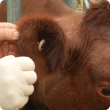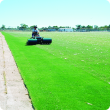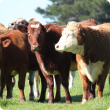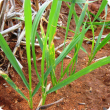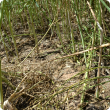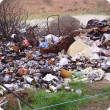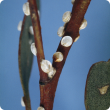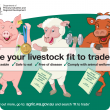Services
Search in Services
Filter services by topic
- (-) Remove Control methods filter Control methods
- Pests, weeds & diseases (23) Apply Pests, weeds & diseases filter
- Chemicals (16) Apply Chemicals filter
- Diseases (10) Apply Diseases filter
- Biosecurity & quarantine (9) Apply Biosecurity & quarantine filter
- Biosecurity (9) Apply Biosecurity filter
- Livestock biosecurity (8) Apply Livestock biosecurity filter
- Livestock & animals (8) Apply Livestock & animals filter
- Grains (7) Apply Grains filter
- Crops (7) Apply Crops filter
- Preventing residues (6) Apply Preventing residues filter
- Grains research & development (6) Apply Grains research & development filter
- Crop diseases (5) Apply Crop diseases filter
- Residues in livestock (5) Apply Residues in livestock filter
- Veterinary chemicals (5) Apply Veterinary chemicals filter
- Livestock health & diseases (5) Apply Livestock health & diseases filter
- Fungi (5) Apply Fungi filter
- Livestock management (4) Apply Livestock management filter
- Livestock disease surveillance (4) Apply Livestock disease surveillance filter
- Fungicides (3) Apply Fungicides filter
- Wheat (3) Apply Wheat filter
- Livestock species (3) Apply Livestock species filter
- Dairy cattle (3) Apply Dairy cattle filter
- Beef cattle (3) Apply Beef cattle filter
- Mechanical, physical and cultural (2) Apply Mechanical, physical and cultural filter
- Herbicides (2) Apply Herbicides filter
- Weeds (2) Apply Weeds filter
- Emergency animal disease preparedness (2) Apply Emergency animal disease preparedness filter
- Barley (2) Apply Barley filter
- Canola (2) Apply Canola filter
- Pests (1) Apply Pests filter
- Pest insects (1) Apply Pest insects filter
- Oats (1) Apply Oats filter
- Residues in crops (1) Apply Residues in crops filter
- Sheep (1) Apply Sheep filter
- Management & reproduction (1) Apply Management & reproduction filter
- Wildlife biosecurity (1) Apply Wildlife biosecurity filter
- Stockfeed (1) Apply Stockfeed filter
- Horticulture (1) Apply Horticulture filter
- Food, export & investment (1) Apply Food, export & investment filter
- Crop weeds (1) Apply Crop weeds filter
- Goats (1) Apply Goats filter
- Insecticides (1) Apply Insecticides filter
- Irrigated crops (1) Apply Irrigated crops filter
- Investment attraction (1) Apply Investment attraction filter
- Livestock movement & identification (1) Apply Livestock movement & identification filter





